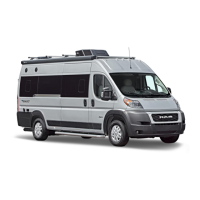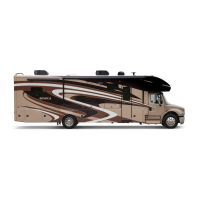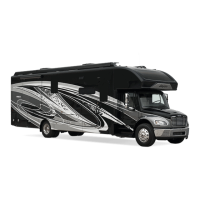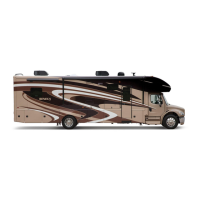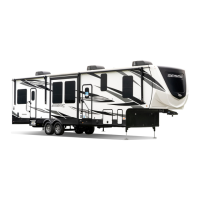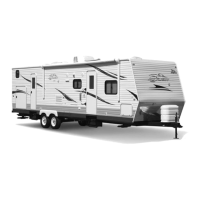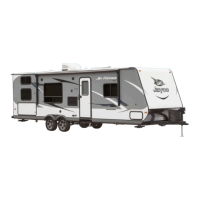77
The preferred method to winterize your recreation vehicle is by using RV antifreeze in the
plumbing system.
This method uses compressed air to blow out any remaining water in the system after ini-
tially draining water using drain valves. Tools required would be an air compressor and a
blowout plug.
1. Turn o the water heater gas valve typically located outside the RV. Water heater
power should be OFF.
2. Level the RV and drain the fresh water plumbing system. See Draining the Fresh
Water System.
3. Water heater bypass should be set to . This allows air to ow through the
water heater.
4. RV water lter cartridge should be removed for winterizing. Refer to Water Purica-
tion System section.
5. Open the fresh water tank drain valve to avoid pressure build up in the fresh water tank.
6. Run the pump until it is dry (approximately 15 to 20 seconds). Operating the pump
longer than that with no water can damage the pump.
7. Open the fresh water tank drain valve to avoid pressure build up in the fresh water tank.
8. Open all faucets in the RV Including the shower.
Attach a blowout plug to the city water inlet on the outside of the RV. Refer to Fresh Water
Connections
Never apply air pressure to the water system with any of the valves in
the closed position. Air pressure applied to a closed valve, faucet or low
point drain could potentially damage the seals and cause water leaks. If
you have questions, consult with your RV dealer. Using RV antifreeze is
the preferred method of winterization.
,
Filters should be replaced at the beginning of the camping
season or if they have come into contact with contaminated water or
antifreeze.
The water heater must be drained to prevent damage from freez-
ing. It is recommended the water heater be drained and bypassed during
the winterization process particularly if introducing RV antifreeze into the
plumbing system.
Antifreeze should be kept out of the water heater.
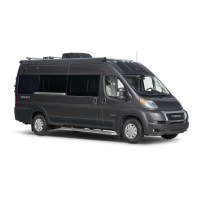
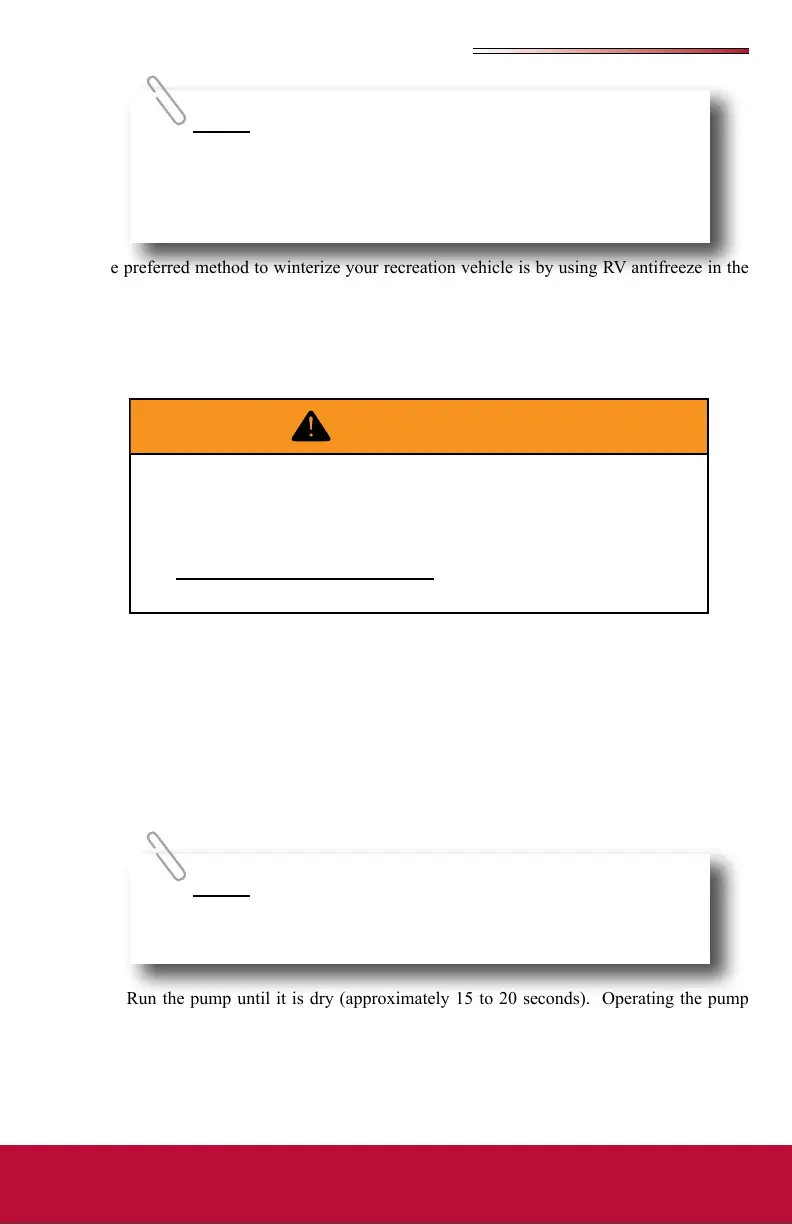